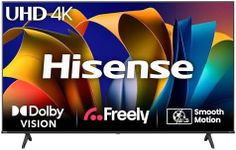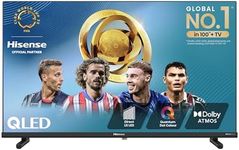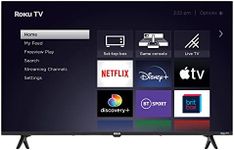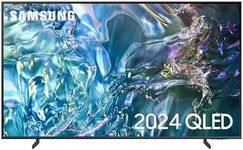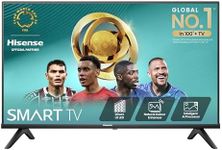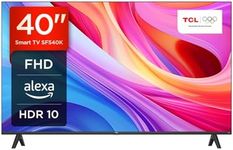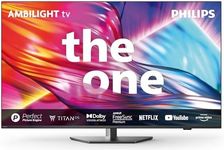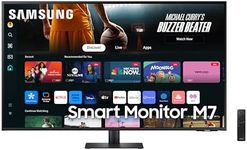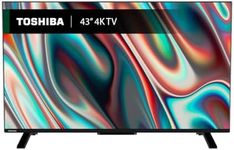Buying Guide for the Best 40 Inch Smart Tvs
Choosing the right 40-inch smart TV can greatly enhance your viewing experience. When selecting a TV, it's important to consider various specifications that will impact picture quality, sound, connectivity, and overall performance. Understanding these key specs will help you make an informed decision that best suits your needs and preferences.ResolutionResolution refers to the number of pixels that make up the picture on the screen. The higher the resolution, the sharper and more detailed the image. Common resolutions for 40-inch TVs include Full HD (1080p) and 4K (2160p). Full HD is suitable for regular TV watching and streaming, while 4K offers a more immersive experience with greater detail, especially if you enjoy watching high-definition content or gaming. Choose 4K if you want the best picture quality and plan to watch a lot of 4K content.
Refresh RateThe refresh rate is the number of times per second the TV refreshes the image on the screen, measured in Hertz (Hz). Common refresh rates are 60Hz and 120Hz. A higher refresh rate results in smoother motion, which is particularly beneficial for watching sports, action movies, or playing video games. If you primarily watch regular TV shows or movies, 60Hz is usually sufficient. However, if you are a gamer or enjoy fast-paced content, consider a TV with a 120Hz refresh rate.
Smart TV PlatformThe smart TV platform is the operating system that allows you to access streaming services, apps, and other online content. Popular platforms include Android TV, Roku TV, and proprietary systems from manufacturers like Samsung and LG. Each platform has its own interface and app availability. Choose a platform that you find user-friendly and that supports the streaming services you use most frequently. If you have other smart devices, consider a platform that integrates well with them.
HDR (High Dynamic Range)HDR enhances the contrast and color range of the TV, providing a more realistic and vibrant picture. There are different HDR formats, such as HDR10, Dolby Vision, and HLG. HDR10 is the most common and is supported by most TVs, while Dolby Vision offers a more dynamic and superior HDR experience but is less widely available. If you want the best possible picture quality and watch a lot of HDR content, look for a TV that supports multiple HDR formats.
ConnectivityConnectivity options determine how you can connect other devices to your TV. Important ports include HDMI, USB, and audio outputs. HDMI ports are essential for connecting devices like gaming consoles, Blu-ray players, and streaming devices. More HDMI ports provide greater flexibility. USB ports allow you to connect external storage or other peripherals. Ensure the TV has enough ports to accommodate all your devices. Additionally, check for Wi-Fi and Bluetooth capabilities for wireless connections.
Sound QualitySound quality is crucial for an immersive viewing experience. While most TVs come with built-in speakers, their quality can vary. Look for TVs with higher wattage speakers or additional sound technologies like Dolby Audio or DTS. If sound quality is a priority, consider a TV with good built-in speakers or plan to invest in an external sound system like a soundbar or home theater system. Evaluate your space and listening preferences to determine the best sound setup for you.
Design and Build QualityThe design and build quality of the TV can affect both aesthetics and durability. Consider the TV's bezel size, thickness, and stand design. A slim bezel and sleek design can enhance the look of your living space. Additionally, ensure the build quality is sturdy, especially if you plan to mount the TV on a wall. Choose a design that complements your room's decor and meets your installation preferences.
